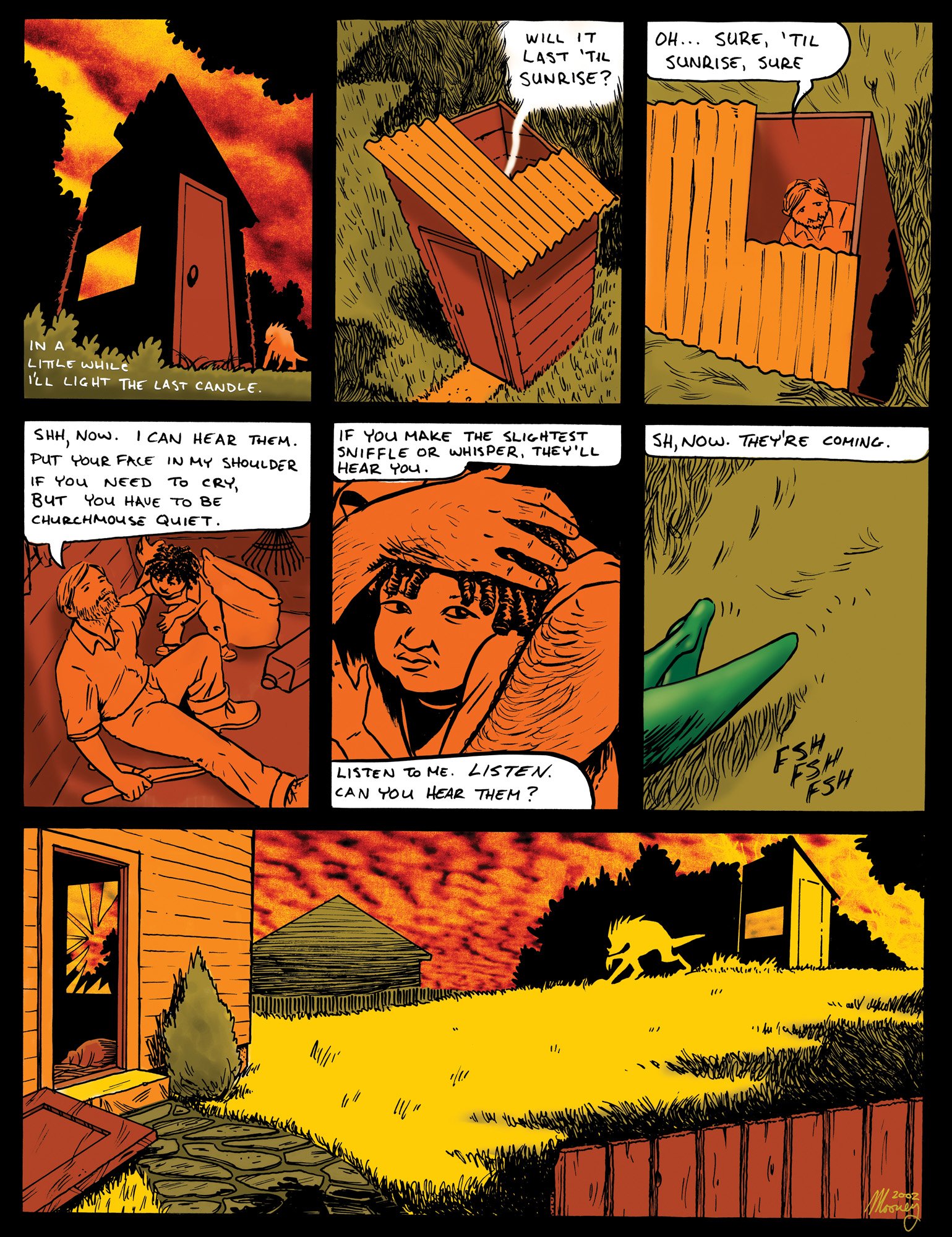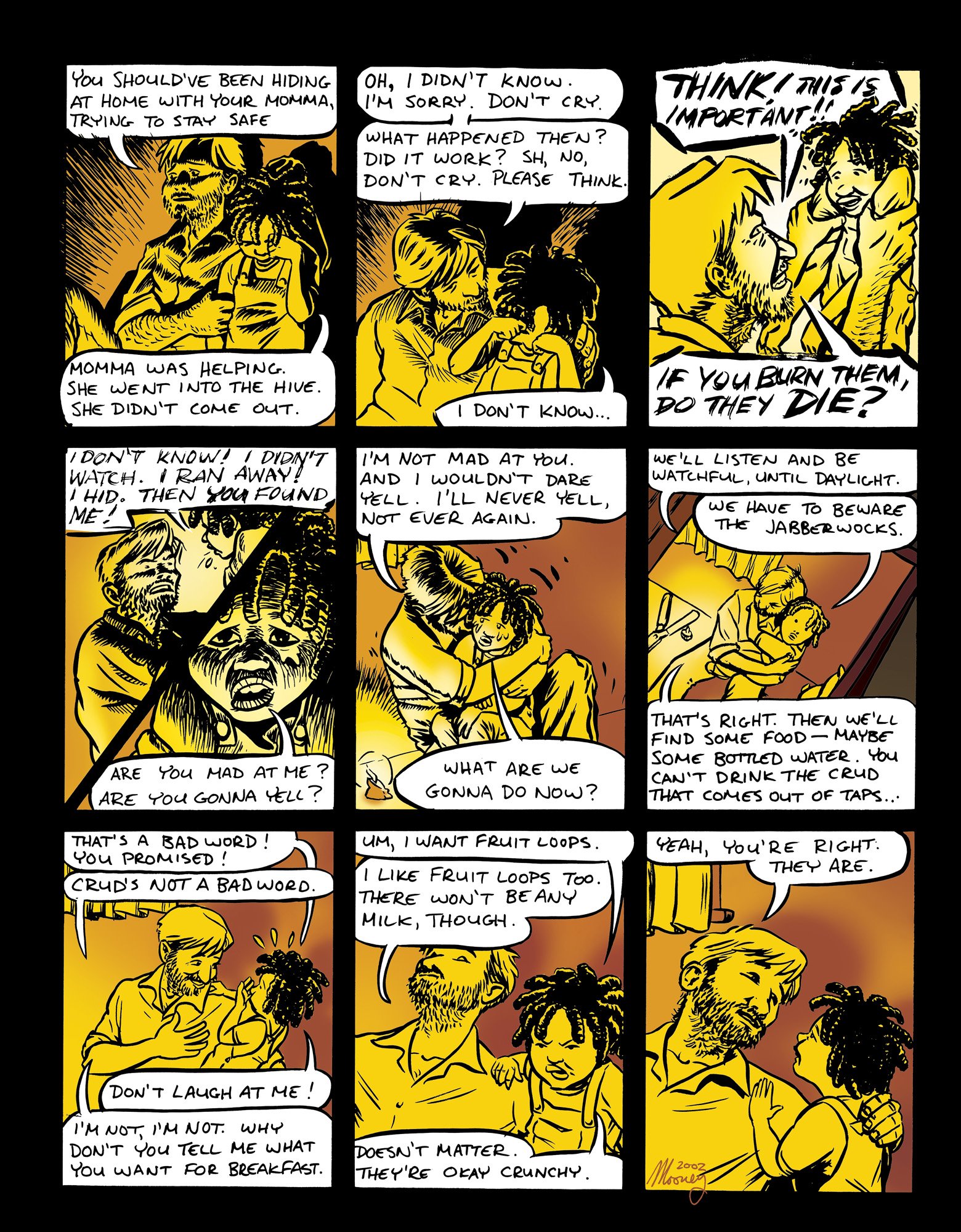Jabberwocks: A First Step into Long-Form Comic Collaboration
(Scroll down to see the complete story)
Overview / Challenge
Jabberwocks is a short horror comic written by Robyn Herrington of Calgary, Alberta, edited by Andrew Foley, and illustrated by Scott Mooney for Unbound Comics — an early digital-first anthology publisher in the 2000s.
The story marked both Robyn’s first attempt at writing for comics and my first opportunity to illustrate a long-form story in collaboration with another writer. The creative goal was purely artistic: to explore how visual storytelling and tone could heighten emotion and tension within a short horror narrative.
⸻
My Role
I was responsible for every visual element of the comic — story layout, penciling, inking, coloring, and lettering.
Working entirely over email correspondence (before the age of cloud tools), I collaborated with Robyn and Andrew to interpret the script and refine pacing, composition, and visual tone.
Although I’ve always gravitated toward science fiction in my personal projects, this was my first foray into illustrating horror — a genre that has since become a recurring theme in my collaborations. The project challenged me to create emotion through atmosphere, texture, and timing.
⸻
Process
I approached Jabberwocks as both an experiment and a study in visual empathy — using material, style, and structure to express perspective and emotion.
Visual Language & Composition
Structured each page around a 9-panel grid to maintain rhythm and psychological tension, occasionally breaking the grid by merging panels to heighten impact or create a visual pause.
The disciplined panel layout created a sense of containment, while the occasional break added release — a rhythm that mirrored the story’s emotional pulse.
Mixed-Media Storytelling
Main sequences: Hand-inked with brush and ink on paper, scanned, and digitally colored in Photoshop.
Flashbacks: Created with hand-carved linoleum block prints, printed, scanned, and digitally colored for an aged, tactile look.
Child’s memories: Drawn in crayon on scrap paper, scanned, and colored digitally to evoke innocence and emotional vulnerability.
Using style as voice, each visual treatment reflected the speaker’s perspective. The child’s crayon-drawn memories created an immediate empathic connection — helping readers feel her experience rather than just see it.
⸻
Solution / Results
Published digitally in an Unbound Comics anthology, one of the first fully online comic collections of its era.
Represented my first full collaboration with a writer and editor, proving that I could successfully adapt someone else’s script into a cohesive visual narrative.
The process built my confidence in collaboration and adaptation, skills that became foundational in my later long-form storytelling projects such as Parting Ways.
Deepened my understanding of narrative design, showing how panel rhythm, material, and visual tone can communicate emotion as powerfully as dialogue.
Pioneered my ongoing interest in blending traditional craftsmanship with digital storytelling — an approach that continues to shape my professional work today.
Jabberwocks remains a meaningful early milestone — a project that taught me how curiosity, collaboration, and empathy can turn an illustrated script into a living, breathing story.








